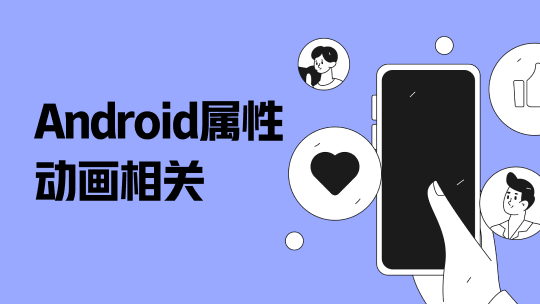在使用Ajax: Hibernate Entity => json, Flex RemoteObject: Hibernate Entity => ActionScript Object的过程,经常碰到如下问题:
问题:
1.Hibernate碰到延迟加载的属性访问时如果session被关闭则抛出LazyInitializationException
2.Hibernate中的one-to-many等关联关系在序列化时如果没有控制,则将整个数据库都有可能被全部序列化
3.过多的使用DTO/ValueObject解决这个问题.
解决办法:
对Entity对象生成一个动态代理,拦截getXXXX()方法,如果访问的是延迟加载的属性,则return null,而不抛出LazyInitializationException,递归生成属性的代码,只要碰到未延迟加载的属性,而序列化会自动停止.避免将整个Entity序列化传播,导致可能序列化整个数据库的问题.
类似解决方案:
dwr中HibernateConverter,在序列化时如上类似,碰到延迟加载的属性自动停止convert工作.而HibernateBeanSerializer则一劳永逸,无论object => json都可以工作.
使用用例:
Java代码
//role为原始对象
role = (Role)roleDao.getById(new Long(1));
//生成的动态代理proxyRole,访问延迟加载的属性将return null
Role proxyRole = (Role)new HibernateBeanSerializer
assertNotNull(role.getResource());
assertNull(proxyRole.getResource()); //延迟加载,为null
Hibernate.initialize(role.getResource()); //抓取进来
assertNotNull(proxyRole.getResource()); //不为null
源码.
Java代码
package cn.org.rapid_framework.util;
import java.lang.reflect.Modifier;
import java.util.ArrayList;
import java.util.Collection;
import java.util.LinkedHashMap;
import java.util.LinkedHashSet;
import java.util.List;
import java.util.Map;
import java.util.Set;
import org.aopalliance.intercept.MethodInterceptor;
import org.aopalliance.intercept.MethodInvocation;
import org.hibernate.Hibernate;
import org.hibernate.collection.PersistentCollection;
import org.hibernate.proxy.HibernateProxy;
import org.springframework.aop.framework.ProxyFactory;
import org.springframework.util.StringUtils;
/**
* 用于Hibernate Object 的序列化,访问延迟加载的属性不会抛出LazyInitializationException,而会返回null值.
* 使用:
*
* Blog proxyBlog = new HibernateBeanSerializer(blog).getProxy();
*
* @author badqiu
* @param
*/
public class HibernateBeanSerializer
T proxy = null;
/**
*/
public HibernateBeanSerializer(T object,String... excludesProperties) {
if(object == null) {
this.proxy = null;
}else {
ProxyFactory pf = new ProxyFactory();
pf.setTargetClass(object.getClass());
pf.setOptimize(true);
pf.setTarget(object);
pf.setProxyTargetClass(true);
pf.setOpaque(true);
pf.setExposeProxy(true);
pf.setPreFiltered(true);
HibernateBeanSerializerAdvice beanSerializerAdvice = new HibernateBeanSerializerAdvice();
beanSerializerAdvice.setExcludesProperties(excludesProperties);
pf.addAdvice(beanSerializerAdvice);
this.proxy = (T)pf.getProxy();
}
}
public T getProxy(){
return this.proxy;
}
static private class HibernateBeanSerializerAdvice implements MethodInterceptor {
private String[] excludesProperties = new String[0];
public String[] getExcludesProperties() {
return excludesProperties;
}
public void setExcludesProperties(String[] excludesProperties) {
this.excludesProperties = excludesProperties == null ? new String[0] : excludesProperties;
}
public Object invoke(MethodInvocation mi) throws Throwable {
String propertyName = getPropertyName(mi.getMethod().getName());
Class returnType = mi.getMethod().getReturnType();
if(propertyName == null) {
return mi.proceed();
}
if(!Hibernate.isPropertyInitialized(mi.getThis(), propertyName)) {
return null;
}
if(isExclude(mi, propertyName)) {
return null;
}
Object returnValue = mi.proceed();
return processReturnValue(returnType, returnValue);
}
private Object processReturnValue(Class returnType, Object returnValue) {
if(returnValue == null)
return null;
if(returnType != null && Modifier.isFinal(returnType.getModifiers())) {
return returnValue;
}
//This might be a lazy-collection so we need to double check
if(!Hibernate.isInitialized(returnValue)) {
return null;
}
//this is Hibernate Object
if(returnValue instanceof HibernateProxy) {
return new HibernateBeanSerializer(returnValue).getProxy();
}else if(returnValue instanceof PersistentCollection) {
if(returnType.isAssignableFrom(Map.class)) {
Map proxyMap = new LinkedHashMap();
Map map = (Map)returnValue;
Set<Map.Entry> entrySet = map.entrySet();
for(Map.Entry entry : entrySet) {
proxyMap.put(entry.getKey(), new HibernateBeanSerializer(entry.getValue()));
}
return proxyMap;
}
Collection proxyCollection = null;
if(returnType.isAssignableFrom(Set.class)) {
proxyCollection = new LinkedHashSet();
}else if(returnType.isAssignableFrom(List.class)) {
proxyCollection = new ArrayList();
}else {
return returnValue;
}
for(Object o : (Collection)returnValue) {
proxyCollection.add(new HibernateBeanSerializer(o).getProxy());
}
return proxyCollection;
}else {
return returnValue;
}
}
private boolean isExclude(MethodInvocation mi, String propertyName)
throws Throwable {
for(String excludePropertyName : excludesProperties) {
if(propertyName.equals(excludePropertyName)) {
return true;
}
}
return false;
}
private static String getPropertyName(String methodName) {
String propertyName = null;
if(methodName.startsWith("get")) {
propertyName = methodName.substring("get".length());
}else if(methodName.startsWith("is")) {
propertyName = methodName.substring("is".length());
}else if(methodName.startsWith("set")) {
propertyName = methodName.substring("set".length());
}
return propertyName == null ? null : StringUtils.uncapitalize(propertyName);
}
}
}
另这个类属于rapid-framework的一部分,v2.0版本的flex RemoteObject将采用这个办法.preview版本即将发布
本文网址: http://www.baisoujs.com/detail_136984518332641.html
百搜相关文章 亲,没有找到想要的吧?点击以下百搜文章试试看哦
- Asp.net MVC示例项目“Suteki.Shop”分析之NHibernate(百搜技术)
- Hibernate通用序列化方案,避免延迟加载问题及序列化整个数据库至(百搜技术)
- ESFramework使用技巧(2) - 在插件中使用NHibernate(百搜技术)
- 智能客户端-使用 NHibernate 和 Rhino 服务总线构建分布式应用程(百搜技术)
- 小结Hibernate的查询方式(百搜技术)
- Hibernate检索策略小结(百搜技术)
- Hibernate的优化方案(百搜技术)
- hibernate的性能优化(百搜技术)
- 采用Java持久化框架:选择、时机和优缺点(百搜技术)
- Hibernate Validator 4正式版发布(百搜技术)
- Hibernate之父:力挺Java EE 6(百搜技术)
- Hibernate连接配置方法剖析(百搜技术)
- 浅析Hibernate基础知识(百搜技术)
- Hibernate update全面讲解(百搜技术)
- Hibernate框架获得成功的几个理由(百搜技术)
- Hibernate查询语言概括(百搜技术)
- Hibernate批量操作概括(百搜技术)
- 如何学习Hibernate框架(百搜技术)
- Hibernate自动根据映射创建数据库表(百搜技术)
- Java配置Hibernate详细教程(百搜技术)













